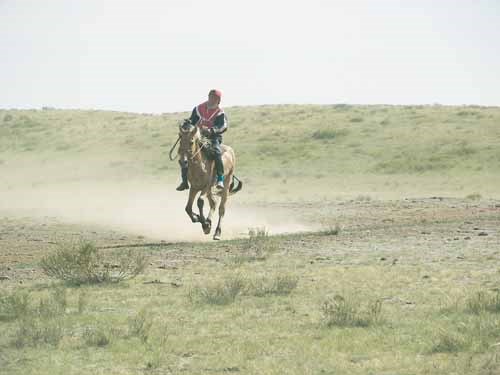The film which created the big buzz at this year's Yorkton Film Festival was clearly Silent Bombs: All For The Motherland.
The film, for Saskatchewan-based 4 Square Entertainment took home five Golden Sheaf awards including Best of Saskatchewan and Best of Festival honours (see related story this issue).
The story though is an international one detailing what Soviet nuclear bomb testing did to people in the region of Kazakhstan where the testing took place.
The Festival program explains what the film is about. "From 1949 to 1989 the Soviet Union exploded 500 nuclear bombs in northeastern Kazakhstan. 200,000 villagers loving close to the test site were exposed to high levels of radiation. Deliberately unprotected from the explosions, they were treated as human guinea pigs, instruments of study in the event the cold war turned 'hot'."
Gerald B. Sperling, the film's producer said it is a production which affected him in ways no other film he has made has.
"For me it is probably the most gut-wrenching film I've ever made," he said, terming what he saw in Kazakhstan was "as close as to what Hell is all about," that he has seen.
Sperling said what the film shows is a different reality in terms of the effects nuclear bombs have on people. He said we generally think of an atomic bomb killing people and destroying buildings, "and the people contaminated, they die."
However, the experience of people near the Polygon where Soviet nuclear bomb testing took place are experiencing long term effects.
"What has happened it goes on after the explosions, on and on and on," said Sperling.
The result is young girls now getting breast cancer, death rates being higher than expected, and birth defects still occurring at alarming rates.
"These people who are getting these illnesses were never exposed to radiation," said Sperling. "What happened to the grandparents, their genes have been changed."
The idea for the film actually came about when Sperling met with a trade delegation from Kazakhstan. One of the delegates suggested he should do a film in his country.
As a result Sperling said he ended up reading Epicenter of Peace by Kazakhstan President Nursultan Nazarbayev, which detailed the nuclear testing.
"I decided this was a film that had to be made," he said.
On a subsequent visit to Kazakhstan Sperling said he learned there had been a previous film made on the subject called 'Polygon', adding when he saw that film he "immediately realized this was important footage."
Sperling said they picked up the rights to the 'Polygon' footage which provided the archival material used in Silent Bombs.
The archival footage did not include sound, which created a conundrum for the filmmakers.
"What does it actually sound like when one of these bombs go off?" said the film's director Rob King. "We had to create these sounds."
The film gives those affected a chance to tell their story, to the point Silent Bombs uses sub-titles, which was a conscious decision which took some time to make.
"We had many discussions about that," said King, adding, "I always like to hear people, because you get a sense of the emotion behind it."
Sperling agreed.
"We have used voice-overs before, but we thought in this case we wanted to hear the people," he said.
King said the actual live footage was shot over a month-long stay in Kazakhstan, adding members of the production "had been there several times before that," doing research for the film.
"There was a lot of preparation for this," echoed Sperling. "Five years actually."
The film includes current footage shot in the Polygon itself.
"Right at the centre when the first bomb went off, it's still hot, hot, hot," he said, adding some on the crew wouldn't go into the zone.
Military personal with the film crew basically told them "to get out of here sooner than later, so we didn't stay very long," said Sterling.
King said the heart of the test zone left its impression on him. He said the first bomb site is the size of a football field.
"You can see forever, and you didn't hear a bird, or any other creature. My skin just sort of prickled," he said.
Sperling said he took the film back to Kazakhstan where it was screened in a number of communities including where they had shot footage.
"Some who were in the film had since died, so it was very moving," he said. He added, " one guy came up to me after the showing. He said, 'we know this story, but you've made it into history."




